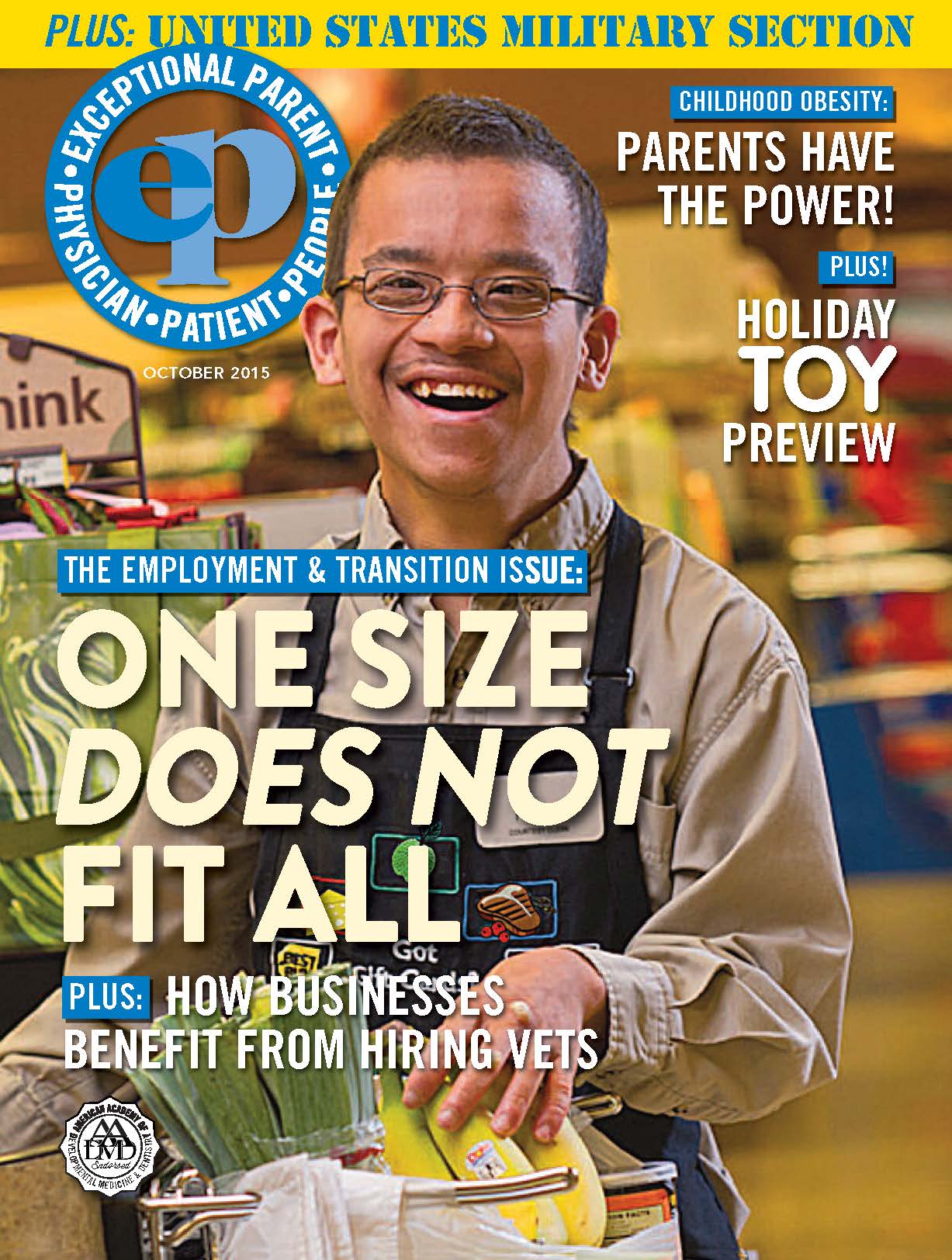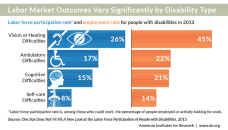AMERICAN INSTITUTES FOR RESEARCH/AIR
The proportion of working-age people with disabilities who are in the labor force fell from 25 percent in 2001 to 16 percent in 2014, according to a new brief from the American Institutes for Research (AIR).
More broadly, among those able to work who are either employed or actively looking for jobs, the data for people with disabilities has remained stagnant, or declined, despite “the array of federal policies, executive orders, and incentive programs intended to increase the employment and employability of people with disabilities,” the study said, including the Americans with Disabilities Act, which turned 25 in July.
State by state, the paper breaks down the workforce participation of people with disabilities, according to disability type.
“One major issue we have identified is that federal policy tends to treat people with disabilities as a homogeneous group,” said Michelle Yin, a senior researcher at AIR and lead author of the study. “But they are not. Once we disaggregated the data by state and specific type of disability, a different picture emerged.”
The paper is titled “One Size Does Not Fit All: A New Look at the Labor Force Participation of People with Disabilities.” It offers a fresh look at the roughly 19 percent of Americans with disabilities, a population that has frequently withdrawn from the workforce. Over recent decades, people with disabilities have comprised over one-third of those who haven’t sought work or stopped trying to find it. Since the Great Recession, employment numbers for this demographic have not bounced back at the same rate as for people without disabilities, the study found.
Yin breaks down percentages of people with disabilities either employed or actively looking for work in all 50 states and the District of Columbia. The data is further disaggregated into four main disability types: cognitive, ambulatory, vision or hearing, and self-care — defined as physical or mental health disabilities that have lasted more than six months, making it difficult for people to handle basic needs. Using 2013 data from the U.S. Census Bureau’s annual American Community Survey, the brief found:
• Alaska, Minnesota and Wyoming have high labor force participation across all disability types.
• West Virginia, Arkansas, Kentucky and Tennessee have low labor force participation rates across all disability types.
• Many states have wide variances among groups. The District of Columbia — despite a high participation rate for people with cognitive difficulties — ranked at the bottom for people with vision or hearing and self-care difficulties. Similarly, Montana has a relatively low overall all participation rate, but ranked in the top 10 for people with ambulatory difficulties.
Although the national employment rate for working age people with disabilities was 25 percent in 2013, that number varied widely by disability type, from a high of 45 percent for people with vision or hearing difficulties to a low of 14 percent for people with self-care difficulties. People with ambulatory and cognitive difficulties had employment rates of 22 percent and 21 percent, respectively. These differences remained similar even when educational attainment—a frequent job-barrier for people with disabilities—is factored in.
Dahlia Shaewitz, a principal researcher at AIR and co-author of the brief, noted that “federal policies and incentives do not offset what is also a matter of simple economics—jobs for people with a disability who are less educated will not provide long-term career advancement, adequate benefits or a living wage.” This reality adds urgency to the idea that federal policies toward people with disabilities should account for their specific circumstances. “If anything, our study shows that there is a wide difference in labor participation among people with different types of disabilities,” Yin said. “But current legislation does not reflect those differences.”
The research brief is the second in a series examining the workplace experiences of people with disabilities. A 2014 AIR brief showed that people with disabilities earned 37 percent less on average than their peers without disabilities—a gap that actually widened with higher educational attainment. “One Size Does Not Fit All: A New Look at the Labor Force Participation of People with Disabilities” can be found at www.air.org.•
ABOUT AIR:
Established in 1946, with headquarters in Washington, D.C., the American Institutes for Research (AIR) is a nonpartisan not-for-profit organization that conducts behavioral and social science research and delivers technical assistance both domestically and internationally in the areas of health, education and workforce productivity. For more information, visit www.air.org


